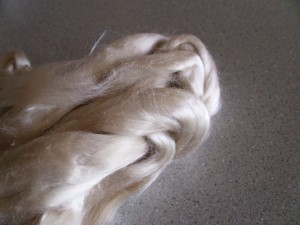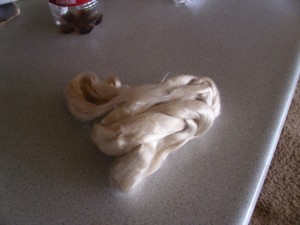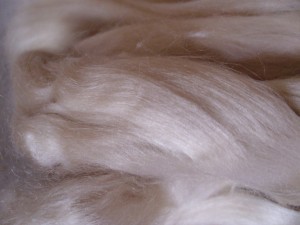There doesn’t seem to be as much information regarding Sea Cell fiber as there is for other materials. I have scoured the internet for how the fiber is processed. There seems to be some secrecy on the production process as companies don’t seem to want to share their trade secrets.
Onto what I did find : In 1997, the CEVA (specialist in the study and enhancement of algae) at the request of couturier Olivier Lapidus developed an unusual research project,a marine plant fibre suitable for spinning, weaving, dying and washing, just like cotton. The result (a jacket made of silk piqué, cotton, algae and cornflower) was presented in the Spring-Summer 1997 collection, 25kg of seaweed were needed to make the necessary fabric. The couturier and CEVA are currently continuing to develop joint projects. The seaweed species, the techniques and the processing costs are classified an ” industrial secret “.
Here are a few pictures of my undyed sea cell fiber.

I found the fiber to be quite silk and light it doesn’t seem as dense as some other plant based fibers. The handle is quite soft and I can’t wait to see how it dyes up.
It has been quite a week with softball games, chorus concerts and parades. Whew! The kids are done with all that stuff for the year. Now maybe I can get back to a more even keel:)
Tags: animal rescue, animals rescue maine, fiber processing, roving wool, sea cell fabric, sea cell fiber, sea cell yarn, seacell spinning, seacell spinning fiber, vegan spinning fiber, vegan spinning wool, vegetarian spinning fibers











